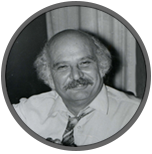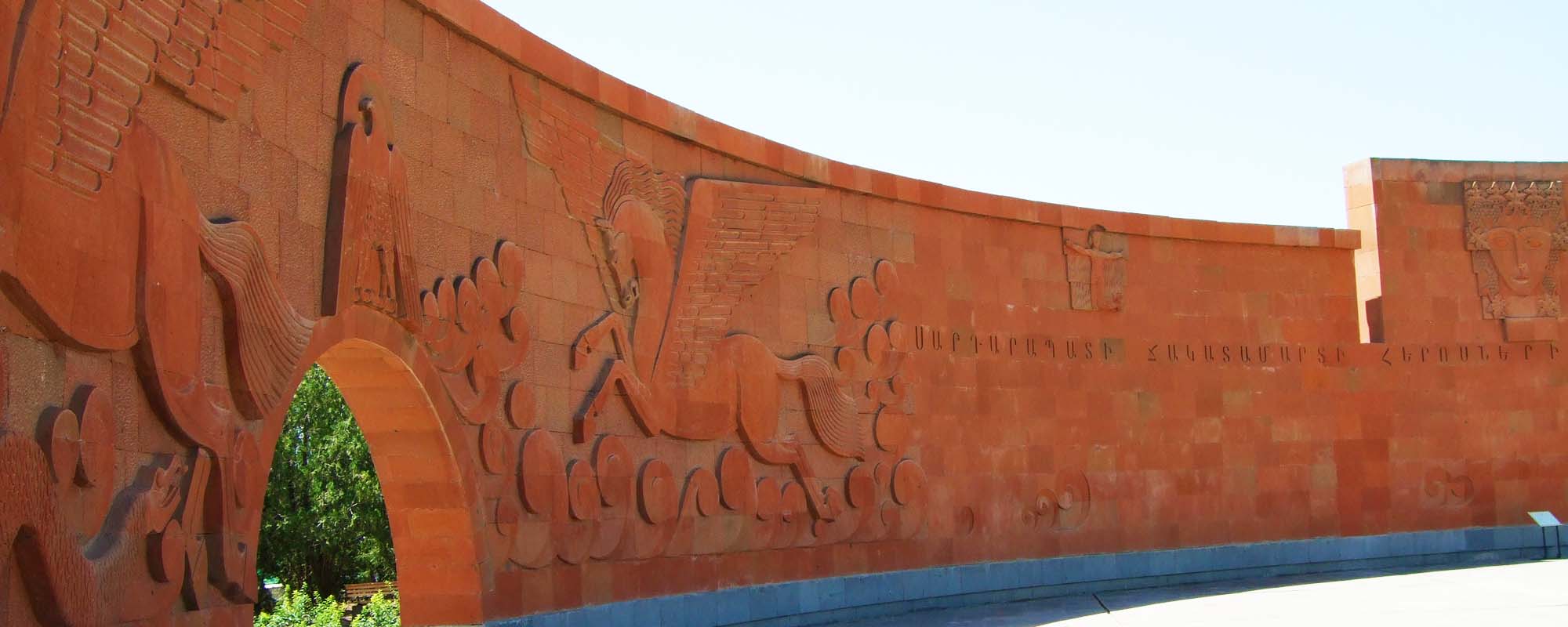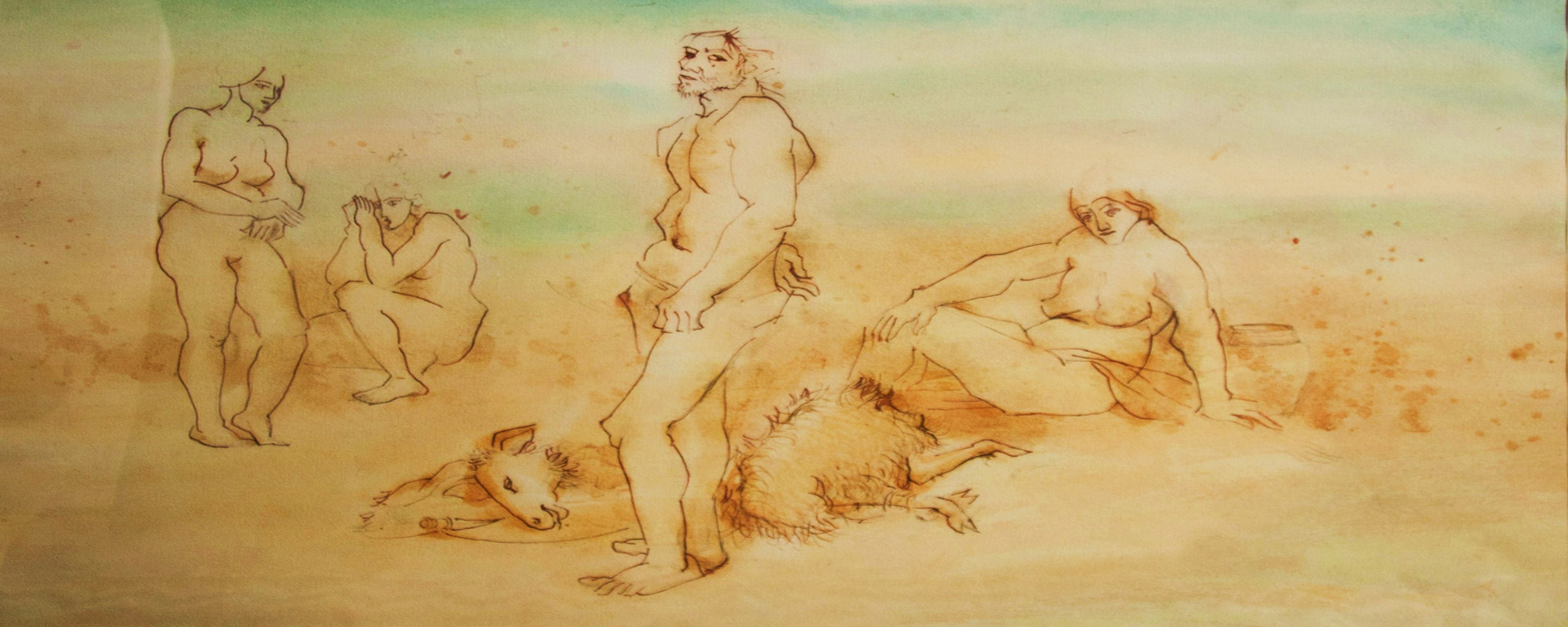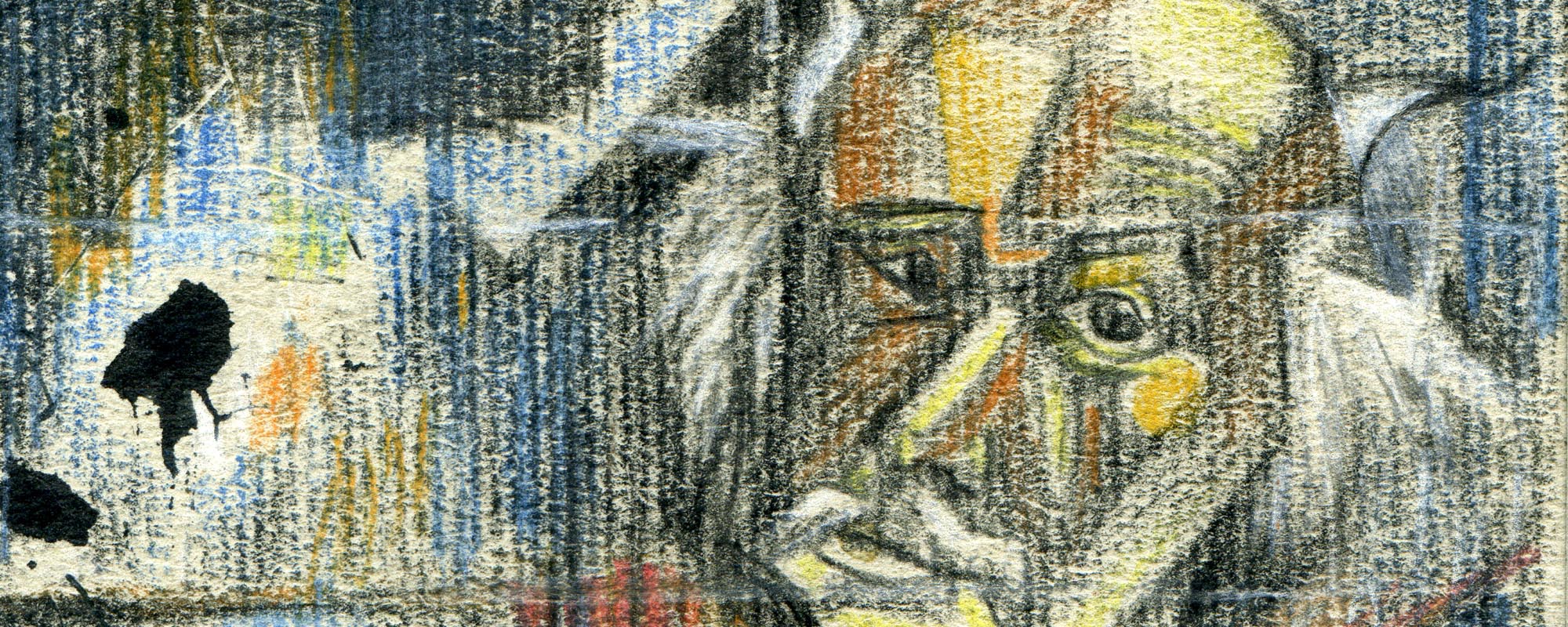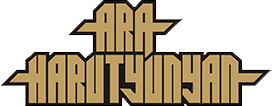Architectural sculptures

Architectural sculpture “Battle of Sarda…
Среда, 01 Январь 2014 04:18 Hits:2455
“A wide avenue leads to the composition of the two winged bulls, symbolizing the power of modern Armenia, and high multi-storey belfry, proclaiming the victory. Then the alley turns to...

“Erebouni” Museum. 1968–1969
Среда, 01 Январь 2014 04:17 Hits:1725
The sculptural decoration of the “Erebouni” museum is the plastic narration deployed in time.

Facade of Yerevan wine plant. 1961
Среда, 01 Январь 2014 04:17 Hits:1582
Harutyunyan found the independent artistic value of the relief and it had become one of his favourite means of sculptural language.

Armenian Academic Drama Theater named af…
Среда, 01 Январь 2014 04:16 Hits:2631
The sculpture of the portal is made by Harutyunyan as a a kind of entry into the world of theater. Female figures, masks, head of the king Artavazd II produce...
The quote of the Master
The main source of my art is fantasy. It's a world of images, symbols, associations with nature. The artist's apprehension of form lies in his appeal to nature…
 “A wide avenue leads to the composition of the two winged bulls, symbolizing the power of modern Armenia, and high multi-storey belfry, proclaiming the victory. Then the alley turns to the left; there are figures of eagles along it, marking the mourning of women for those who died.
“A wide avenue leads to the composition of the two winged bulls, symbolizing the power of modern Armenia, and high multi-storey belfry, proclaiming the victory. Then the alley turns to the left; there are figures of eagles along it, marking the mourning of women for those who died.
A semicircular wall with reliefs depicting the battle of Armenians with the foreigners, a high arch and the building of the museum of the Armenian culture complete the composition.” (From the book “Architecture of the USSR. 1917–1987.”)
Being a founder of architectural sculpture complexes in Soviet Armenia, Harutyunyan has become the author of the most grandiose and ambitious project, the ensemble of “Sardarapat”, which was established in 1968 in order to commemorate the historic victory of Armenians over the Turks during the First World War (21–28 May 1918), that preserved the independence of the Armenian people.
1968. Tufa.
Belfry. 35 m. of height
Bulls. 8 m. of height
Eagles. 4 m. of height
Victory wall. 7×54 m.
Location: area near the railway station Sardarapat (city Oktemberyan during Soviet Union, at present the city has regained its ancient name – Armavir). Coauthors: sculptors S. Minasyan, A. Shaginyan.
The ensemble is located on a hill with a panoramic view of the Ararat Valley. The architectural composition includes figures of winged bulls, framing the approaches to the three-tiered bell tower, and the Eagles alley leading to the Victory wall decorated with bas-reliefs.
“A wide avenue leads to the composition of the two winged bulls, symbolizing the power of modern Armenia, and high multi-storey belfry, proclaiming the victory. Then the alley turns to the left; there are figures of eagles along it, marking the mourning of women for those who died. A semicircular wall with reliefs depicting the battle of Armenians with the foreigners, a high arch and the building of the museum of the Armenian culture complete the composition.” (From the book “Architecture of the USSR. 1917–1987.”)
Koshkin Oleg Aleksandrovich (worked in state administration bodies on urban planning and architecture issues), Chief Scientific Secretary of the Presidium of the Russian Academy of Arts, academician secretary of the department of architecture, academician of the Russian Academy of Arts, an architect, recalls: “I have met Harutyunyan a few times. Working in the State Committee of Architecture in the Council of Ministers of the USSR, we had to travel to the Soviet republics to solve many problems connected with urban development, construction of blocks, and decoration of buildings. When it came to difficult moments, and experts reached the standstill, they used to say "Let's wait till Ara Armenovich comes, he will consider everything." And, indeed, Ara Armenovich came and barely by two or three comments settled the most complicated nodal points connected with both architectural and sculptural solutions. It was a unique, fully gifted person, a great professional and a brilliant sculptor! The executors only needed to follow his advice.”
Ara Harutyunyan
 Ara A. Harutyunyan (born in Yerevan, March 28, 1928-1999) is an outstanding sculptor- master of monuments, graphic artist, People's Artist of Armenia, member of Academy of Fine Arts of USSR and Russian Federation, professor. His works are multifaceted and diverse; he is the author of more than 40 sites, monuments and architectural sculptures in Armenia and abroad. A. Harutyunyan managed to implement many creative ideas. He is the ancestor and the founder of the architectural sculptures in Soviet Armenia, the author of grandiose monuments, urban monuments, easel sculpture and brilliant graphics. Thanks to his God-given talent and obsession with his work he managed to raise Armenia’s artistic culture into a principally new level, bring new way of thinking and fundamentally different sculptural and graphic ideas into the fine arts of XX century.
Ara A. Harutyunyan (born in Yerevan, March 28, 1928-1999) is an outstanding sculptor- master of monuments, graphic artist, People's Artist of Armenia, member of Academy of Fine Arts of USSR and Russian Federation, professor. His works are multifaceted and diverse; he is the author of more than 40 sites, monuments and architectural sculptures in Armenia and abroad. A. Harutyunyan managed to implement many creative ideas. He is the ancestor and the founder of the architectural sculptures in Soviet Armenia, the author of grandiose monuments, urban monuments, easel sculpture and brilliant graphics. Thanks to his God-given talent and obsession with his work he managed to raise Armenia’s artistic culture into a principally new level, bring new way of thinking and fundamentally different sculptural and graphic ideas into the fine arts of XX century.
Indoor sculpture

Geghard lioness. Decorative sculpture, 1…
Monastery of Geghard is situated in Armenian rock mountains. Chronicles refer its origin to the IV century, to the adoption of Christianity…
Read more
Ara Harutyunyan. Dance. 1973
Creating his unique graphic works, Harutyunyan has always emphasized that there must be air in the drawing
Read moreGraphics
- 1
- 2

Venice. 1973
Many works of the artist were born by the impressions got during his stay in Italy and France.

Portrait of wife. 1978
The innocence and nobleness of a female image is the subject that runs through all the works of Ara Harutyunyan. The portrait of his wife Julia is very lyrical.

Graphics of 1960/70's
The graphics 1960/70's in its nature is similar to the sculpture of the time. Drawings and sketches to stunning reliefs made with ink, China ink, Italian pencil which have been...
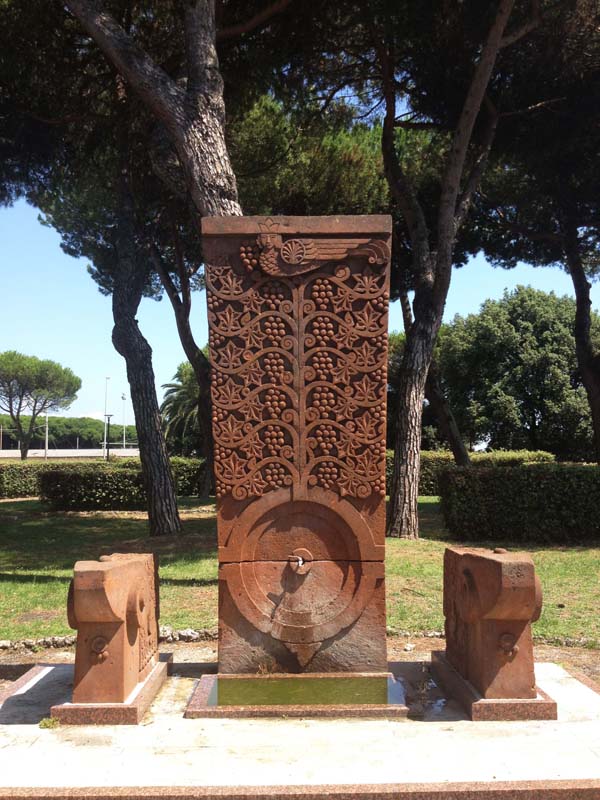
Friendship of Yerevan and Carrara. Italy
Yerevan and Carrara are twinned cities. Monumental drinking fountain “Friendship of Yerevan and Carrara” in the Italian city of Carrara
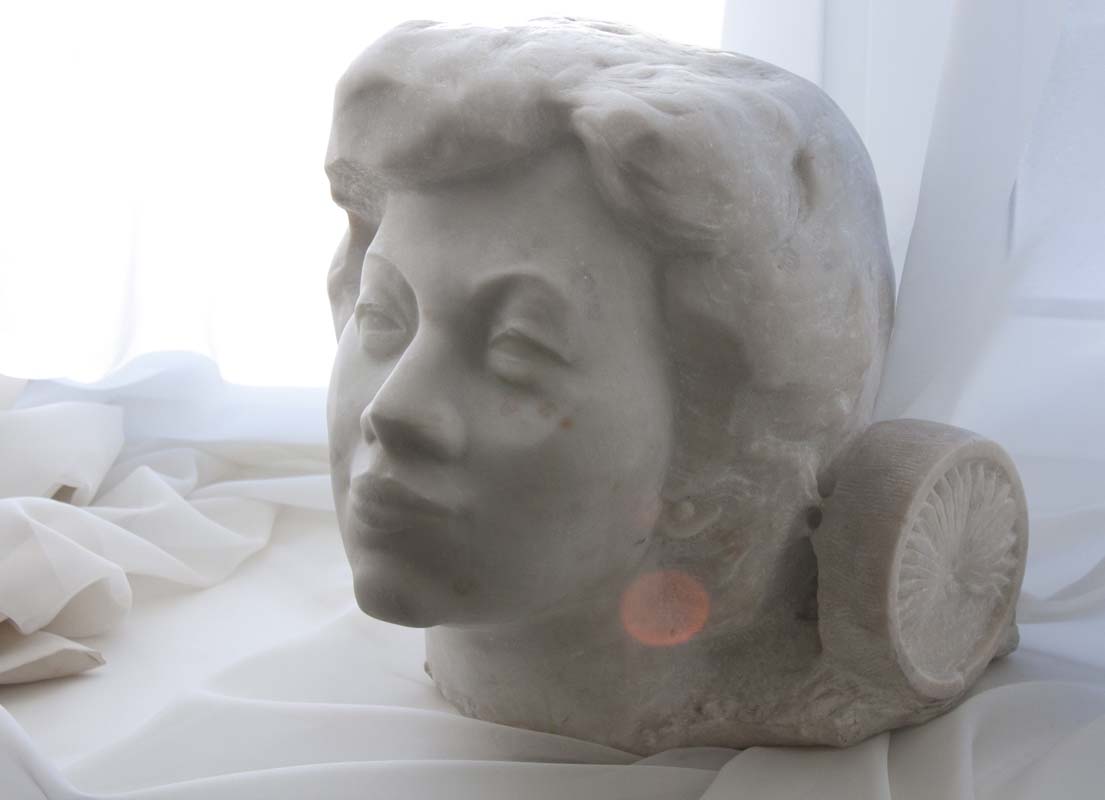
Philippine President Corazon Aquino
Harutyunyan himself jokingly called this story “Juno and Avos” (having in mind the famous Russian rock opera), matching himself with the Count Rezanov and Corazon Aquino with Conchita...
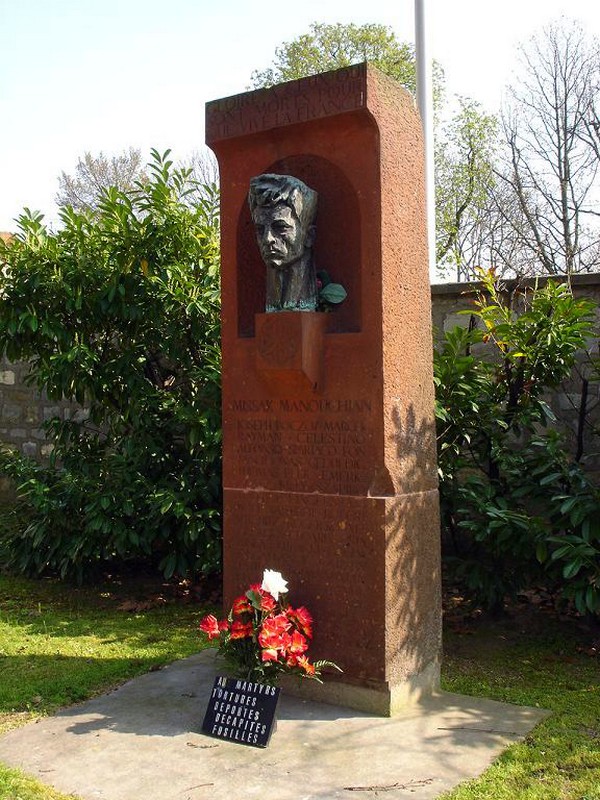
A monument to Missak Manouchian. France
In Paris suburb of Ivry-sur-Seine stands a monument to the great son of Armenian people, national hero of France Missak Manouchian.



